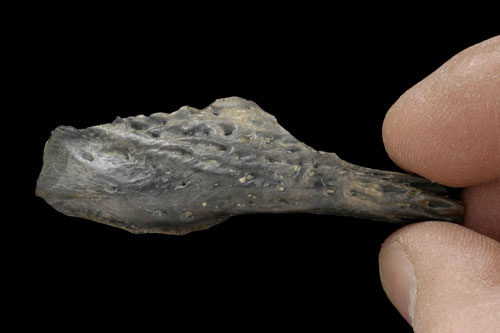Research
Published 10 November 2017The New Zealand fossil revolution

In the last few years there’s been a revolution in our understanding of New Zealand’s ancient animals – and it’s a revolution that shows no signs of stopping
Originally from Our Changing World, published on the RNZ website on 9 November 2017
We used to think New Zealand had always been a land of birds, bats and insects. But the latest evidence shows that about 16-19 million years ago there were two species of crocodiles here as well as a terrestrial turtle and, most surprisingly of all, not one but two mysterious small land mammals.
A growing extinct bird fauna
“It’s certainly not true that we have a complete handle on extinction in New Zealand,” says Canterbury Museum’s Paul Scofield. “We’re still finding and describing new species of extinct birds.”
Trevor Worthy, from Flinders University in Australia, says that the number of known fossil birds has doubled just in the last seven years.
Trevor and Paul have been working with Te Papa’s Alan Tennyson at a fossil site on the Manuherikia River, near St Bathans, for the past 15 years. The site was the shoreline of a large lake that existed 16-19 million years ago, and Trevor says they have now collected at least 70 different species of animal, many of which haven’t been formally named yet.
“We know there was an eagle and a kite, and couple of pigeons,” says Trevor. “But we’ve also got a big pile of song bird or passerine bones that we haven’t yet turned our attention to.”
Two species of extinct crocodile
The discovery of a small fragment of crocodile jaw from the St Bathans site 15 years ago was big news, as it over-turned a long held myth that New Zealand had never had large terrestrial animals.
The team has now collected about 150 crocodile fossils, but Trevor says they are frustrating as they are just small pieces.
“But we have enough to know that they grew to 3 metres long, and surprisingly, there’s quite likely not one but two species [of extinct crocodile.] “
“It’s amazing to think that New Zealand even had a crocodile,” says Trevor. “It’s the most southern location in the world for crocodiles, full stop. But to have two! But it’s frustrating as we don’t have a nice jaw or a nice skull.”
Paul says each new fossil adds to our understanding of these extinct reptiles, and that the team is getting close to being able to give them a name and place them in the crocodile tree of life.
Six species of extinct bat
The tally of extinct bats from the St Bathans has now climbed to at least six. Three of these are Mystacinid bats that are related to the surviving lesser short-tailed bat.
The bat expert is Australian Sue Hand, and her research has been hampered by the lack of molars, which are a key defining characteristic of small mammals.
Latest news on the mysterious land mammal brings number to two
Just over a decade ago, the discovery of a small terrestrial fossil mammal, nicknamed the ‘waddling mouse’ sent ripples through the international scientific community. Like the crocodile, it overturned the long held paradigm that New Zealand’s only land mammals were bats that had flown here.
It was recognised from a 3mm long fragment of jawbone and a premolar. The premolar comes from “your very average primitive mammal,” says Trevor. “It’s something, but it’s very little [in body size] – and it’s not a bat.”
The more recent discovery of an unrelated mysterious molar means that there was a second small land mammal as well.
“It’s a molar that all the mammal people in the world have never seen the likes of,” says Trevor.
“That doesn’t help either, because if you’ve never ever seen it you don’t know what group it belongs to.”
The team has also found some long bones and pieces of jaw, but “we’ve just got these bits – which is a jigsaw puzzle, but that’s life.”
The ancient DNA revolution and the laughing owl
The fossil record is only one of the ways to unravel mysteries of the past. Ancient DNA technology has also been casting a spotlight on more recent animals, from the Holocene, such as the recently described kohatu shag.
Jamie Wood, from Manaaki Whenua Landcare Research, says he has recently used ancient DNA to work out the relationships of the extinct laughing owl, which had been classified in its own genus.
“We were able to sequence a mitochondrial genome from the laughing owl, and compare it to DNA sequences from other owls, and it wasn’t in its own genus,” says Jamie. “It’s in quite a widespread genus that includes New Zealand’s morepork.”
Jamie adds that the owl had long legs and was well adapted to living on the ground, which made it look quite different to its closest relatives.
Additional information: Listen to the Our Changing World interview "Fossils reveal lots of animals we weren't expecting to find in NZ"
RESEARCHER
Dr Vanesa L. De Pietri
ORGANISATION
Canterbury Museum
FUNDING SUPPORT
Marsden Fund
CONTRACT OR PROJECT ID
CTM1601
